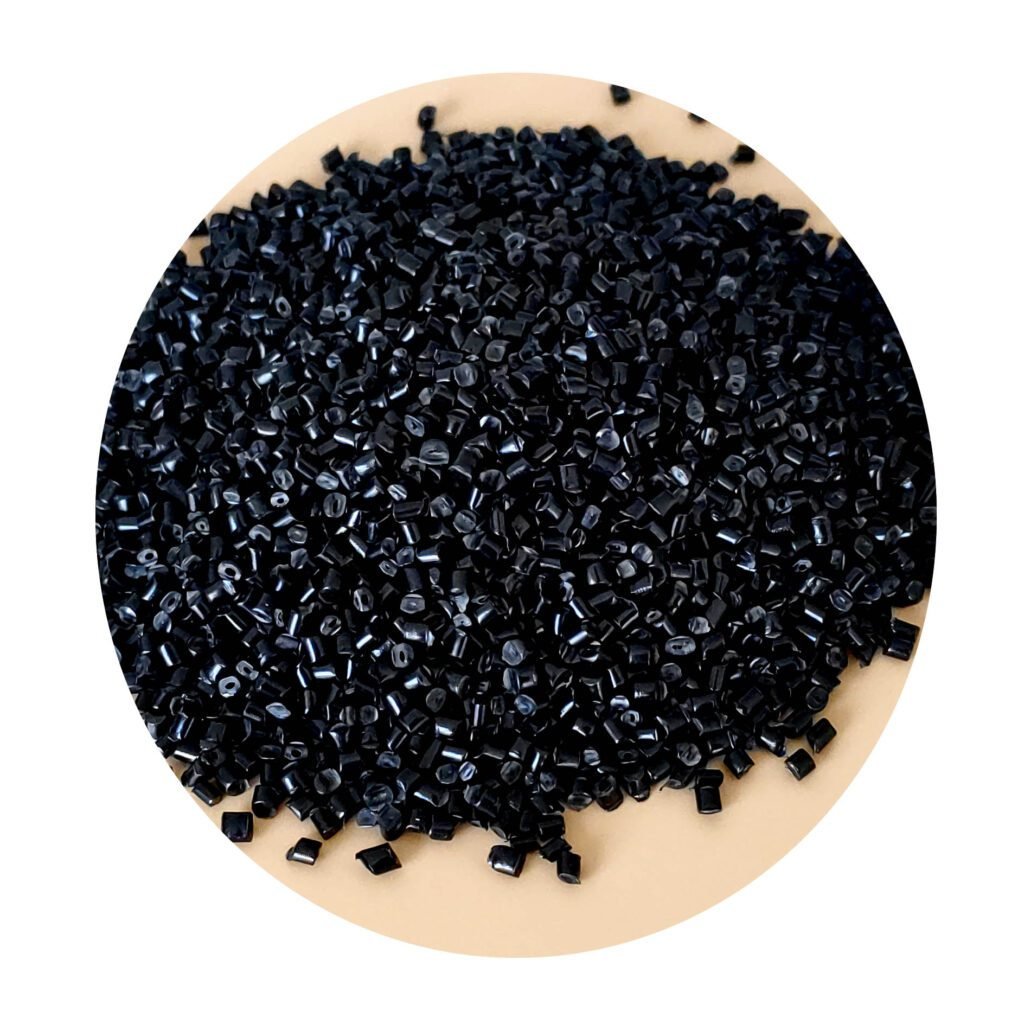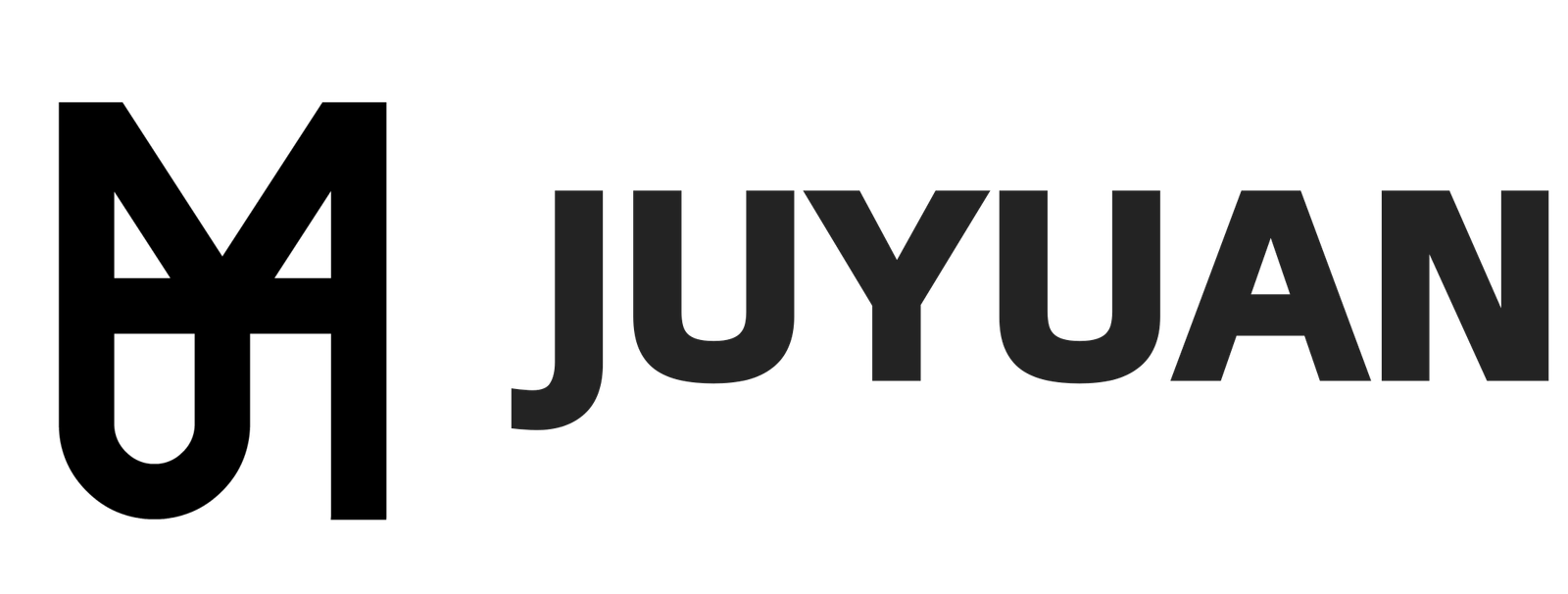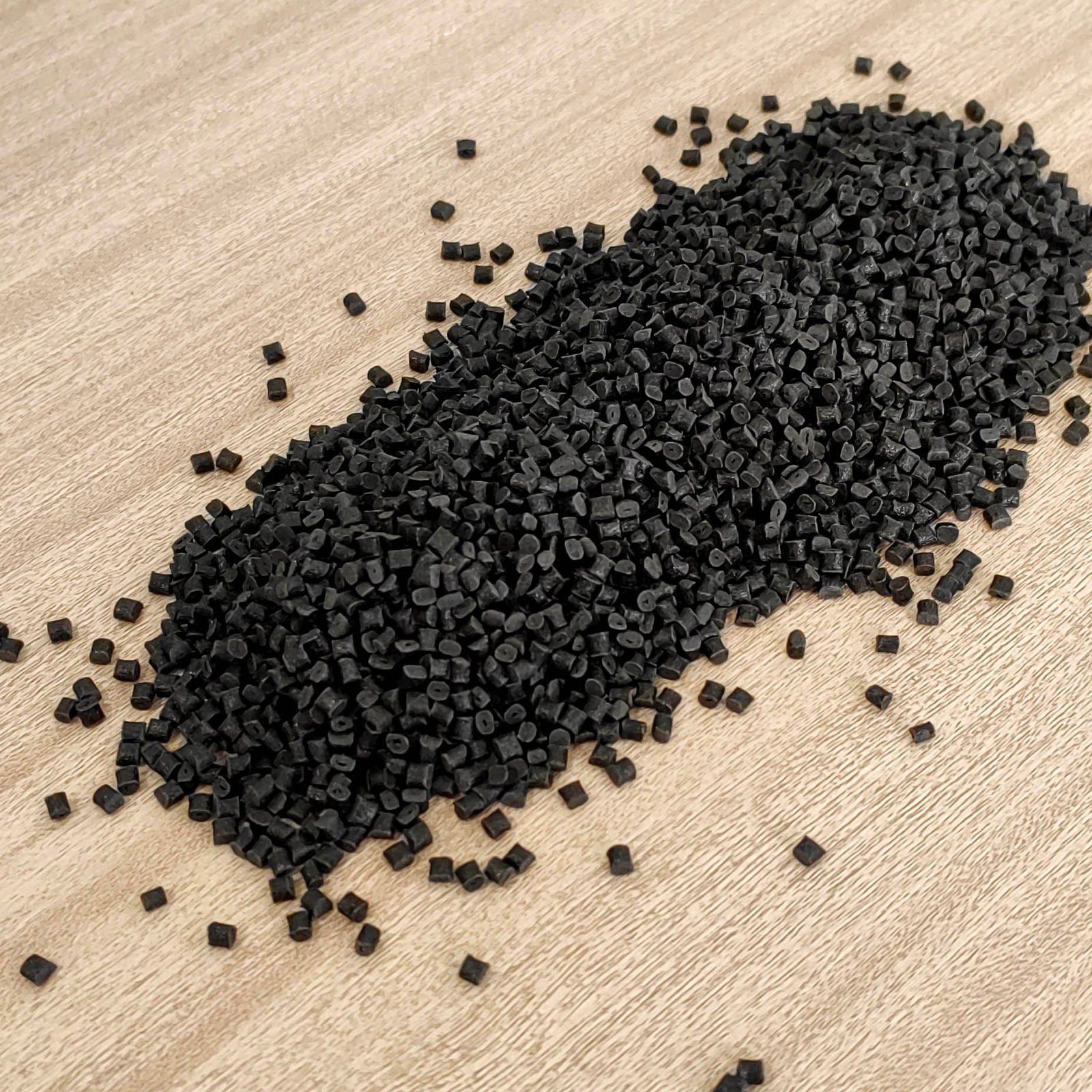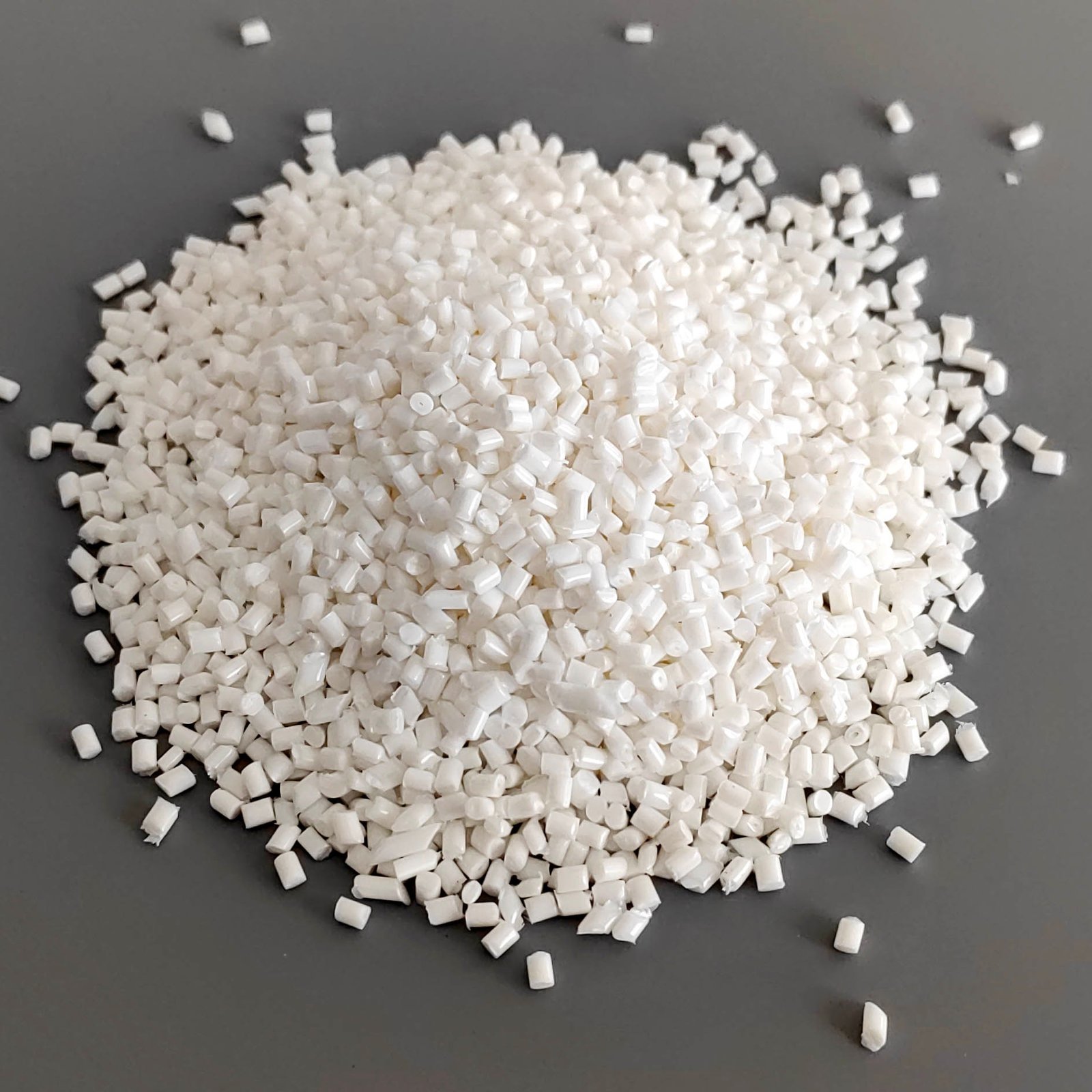PRODUCTS


PBT Plastic Material 2002-2 with Balanced Flow for General Use
Product Struction
What is PBT Plastic Material
As the plastics industry continues to evolve towards high performance and versatility, polybutylene terephthalate (PBT plastic material) has gained wide application in the electrical and electronic, automotive and industrial sectors due to its excellent overall performance. PBT 2002-2 from Celanese is a typical general-purpose pellet material with non-reinforced, internally lubricated properties to meet diversified injection moulding needs.
PBT 2002-2 adopts a granular form and supports the injection molding process. The flame retardant grade of the material is HB. It is equipped with lubricants and mold release agents, which makes the product molding process more stable and ensures a high surface finish. It has medium fluidity and is suitable for injection molded parts with various complex structures, especially for application scenarios that require internal lubrication and balanced processing performance.

01 | Analysis of The Core Performance of PBT Plastic Material
Balance liquidity and processability
Celanese PBT 2002-2 has a good flow balance, taking into account the performance requirements of both the filling and holding pressure stages, ensuring a stable injection molding cycle and accurate finished product dimensions.
Excellent Electrical Insulation
The material has an electrical strength of 30KV/mm and a volume resistance of 1×10^15 Ω.cm, making it suitable for parts with stringent insulation requirements in electronics and electrical appliances.
Stable and reliable thermal performance
Its heat distortion temperature is around 150℃ (0.45MPa load), and its Vicat softening temperature reaches 190℃, which ensures worry-free long-term use under moderate thermal load environment.
The mechanical properties are moderate and meet general requirements
The elongation at break reaches 50%, the tensile strength is 60MPa, demonstrating certain toughness and good strength balance, and is suitable for various general structural components.
Structurally stable, meets basic flame retardant needs
PBT 2002-2 has low shrinkage and good dimensional stability, suitable for precision injection moulding; HB-rated flame retardancy, suitable for general electronics and structural component applications.
02 | PBT Plastic Material Typical Application Scenarios
Electronic and electrical components
Suitable for relay housings, power plugs, etc. Internal lubrication characteristics reduce friction and extend service life.
Automotive interior and non-structural parts
Suitable for the manufacture of interior parts requiring a certain degree of rigidity and aesthetics, flame retardant performance to meet the basic safety standards.
General industrial parts
Such as connector blocks, shells, etc., to meet the physical and electrical requirements of daily industrial applications.
03 | Comparative Advantages with Other PBT Plastic Materials
Compared with reinforced PBT, PBT 2002-2 does not contain glass fibre, but has better surface finish and flow properties due to its internal lubrication and no filler characteristics. It is suitable for precision moulds and applications with high surface requirements. In addition, its low water absorption and stable electrical properties have irreplaceable advantages in the manufacture of certain electronic components.
04 | PBT 2002-2 Plastic Material Technical Data Sheet
| UL | Condition | Standard | Value | Unit | |||
| CTI | IEC 60112 | 0 | PLC | ||||
| HAI | All Color 0.71mm | UL 746A | 0 | PLC | |||
| HAI | All Color 1.5mm | UL 746A | 0 | PLC | |||
| HAI | All Color 3.0mm | UL 746A | 0 | PLC | |||
| HVTR | UL 746A | 1 | PLC | ||||
| HWI | All Color 0.71mm | UL 746A | 4 | PLC | |||
| HWI | All Color 1.5mm | UL 746A | 3 | PLC | |||
| HWI | All Color 3.0mm | UL 746A | 3 | PLC | |||
| RTI | Elec All Color 0.71mm | UL 746B | 130 | °C | |||
| RTI | Elec All Color 1.5mm | UL 746B | 130 | °C | |||
| RTI | Elec All Color 3.0mm | UL 746B | 130 | °C | |||
| RTI | Imp All Color 1.5mm | UL 746B | 120 | °C | |||
| RTI | Imp All Color 3.0mm | UL 746B | 120 | °C | |||
| RTI | Str All Color 0.71mm | UL 746B | 130 | °C | |||
| RTI | Str All Color 1.5mm | UL 746B | 130 | °C | |||
| RTI | Str All Color 3.0mm | UL 746B | 130 | °C | |||
| Volume Resistivity | ASTM D257 | 1E14 | Ω.cm | ||||
| Dimensional Stability | UL746 | 0.0 | % | ||||
| Dielectric Strength | ASTM D149 | 30 | KV/mm | ||||
| Arc Resistance | ASTM D495 | 5 | PLC | ||||
| Flame Rating | All Color 0.71mm | UL94 | HB | ||||
| Flame Rating | All Color 1.5mm | UL94 | HB | ||||
| Flame Rating | All Color 3.0mm | UL94 | HB | ||||
| Mechanical behavior | Condition | Standard | Value | Unit | |||
| Elongation | Yield 50mm/min | ISO 527 | 4 | % | |||
| Elongation | Break 50mm/min | ISO 527 | 50 | % | |||
| Flexural Strength | 23°C | ISO 178 | 80 | MPa | |||
| Flexural Modulus | 23°C | ISO 178 | 2500 | MPa | |||
| Izod Notch Impact | 23°C | ISO 180 | 5 | kJ/m² | |||
| Tensile Strength | 50% strain 50mm/min | ISO 527 | 30 | MPa | |||
| Tensile Strength | Break 50mm/min | ISO 527 | 60 | MPa | |||
| Tensile Strength | Yield 50mm/min | ISO 527 | 60 | MPa | |||
| Tensile Modulus | ISO 527 | 2600 | MPa | ||||
| Charpy Un-notch Impact | 23°C | ISO 179 | NB | kJ/m² | |||
| Charpy Un-notch Impact | -30°C | ISO 179 | 190 | kJ/m² | |||
| Charpy Notch Impact | 23°C | ISO 179 | 6 | kJ/m² | |||
| Charpy Notch Impact | -30°C | ISO 179 | 6 | kJ/m² | |||
| Thermal | Condition | Standard | Value | Unit | |||
| HDT | 0.45MPa | ISO 75 | 150 | °C | |||
| HDT | 1.8MPa | ISO 75 | 55 | °C | |||
| Melting Temperature | 10°C/min | ISO 11357 | 225 | °C | |||
| Glass Transition Temperature | 10°C/min | ISO 11357 | 60 | °C | |||
| CLE | Flow | ISO 11359 | 1.1E-4 | cm/cm/°C | |||
| CLE | xFlow | ISO 11359 | 1.27E-4 | cm/cm/°C | |||
| Vicat Softening Temperature | 50°C/hr 50N | ISO 306 | 190 | °C | |||
| Physical property | Condition | Standard | Value | Unit | |||
| Water Absorption | 23°C Saturation | ISO 62 | 0.45 | % | |||
| Humidity Absorption | 23°C 50RH | ISO 62 | 0.2 | % | |||
| Shrinkage | Flow | ISO 294 | 1.8~2 | % | |||
| Density | ISO 1183 | 1.31 | g/cm³ | ||||
| Melt Index | 250°C 2.16kg | ISO 1133 | 20 | cm³/10min | |||
| Electrical properties | Condition | Standard | Value | Unit | |||
| CTI | IEC 60112 | 600 | V | ||||
| Dielectric Constant | 1MHz | IEC 60250 | 3.5 | ||||
| Dielectric Constant | 100Hz | IEC 60250 | 4 | ||||
| Volume Resistivity | IEC 60093 | 1E+15 | Ω.cm | ||||
| Dielectric Strength | IEC 60243 | 23 | KV/mm | ||||
| Dissipation Factor | 1MHz | IEC 60250 | 0.022 | ||||
| Dissipation Factor | 100Hz | IEC 60250 | 0.0014 | ||||
| Surface Resistivity | IEC 60093 | 1E15 | Ω | ||||
| Hardness | Condition | Standard | Value | Unit | |||
| Rockwell Hardness | M(Scale) | ISO 2039 | 78 | ||||
| Flammability | Condition | Standard | Value | Unit | |||
| Oxygen Limiting Index | ISO 4589 | 22 | % | ||||
| Flame Rating | All Color 0.71mm | UL94 | HB | ||||
| Flame Rating | All Color 1.5mm | UL94 | HB | ||||
| Flame Rating | All Color 3.0mm | UL94 | HB | ||||
05 | Future Development Trends and Technological Outlook
With the advancement of intelligent manufacturing and green environmental protection concepts, PBT plastic materials are evolving towards low-VOC, environmentally friendly resins and intelligent composite materials. The stability and processability of Celanese PBT 2002-2 provide a solid foundation for its subsequent upgrades. In the future, the addition of more functional additives and sustainable formulations is expected to further expand the application fields of PBT.
06 | Conclusion
Choosing Celanese PBT 2002-2 means choosing a general-purpose PBT plastic material with balanced performance, friendly process and wide application. Whether you are an electronic and electrical appliance manufacturer or an industrial parts supplier, this material can bring stable quality and reliable performance guarantee to your products.
For more detailed technical parameters (TDS) of the products or free samples, please feel free to contact our technical support team.

【Related Recommendations】
PA6 11G6-201: Flame-Retardant GF30 Nylon 6 for Structural Applications Learn more>
Evonik PBT GF30 Material:Heat-Stabilized, 30% Glass Fiber Plastic Learn more>
PA6 B3WG6: Heat-Stabilized, Glass-Filled Polyamide 6 for Demanding Applications Learn more>






